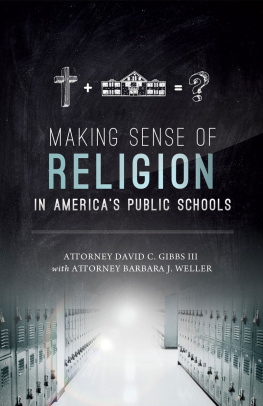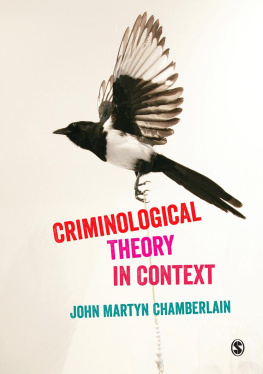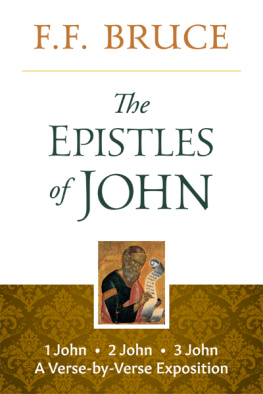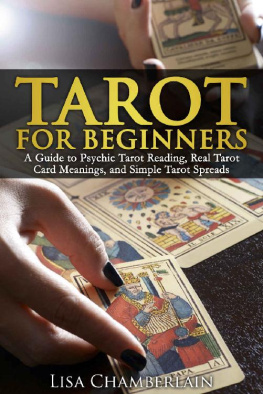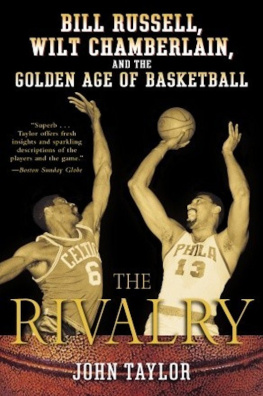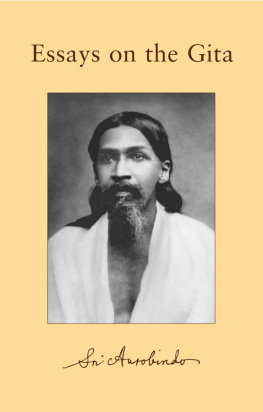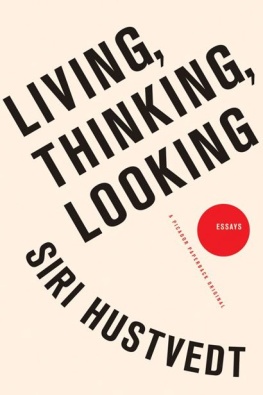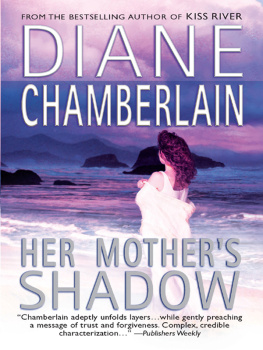John Chamberlain - Living, reading and thinking; 56 essays in exposition
Here you can read online John Chamberlain - Living, reading and thinking; 56 essays in exposition full text of the book (entire story) in english for free. Download pdf and epub, get meaning, cover and reviews about this ebook. year: 1948, publisher: New York, C. Scribners Sons [, genre: Religion. Description of the work, (preface) as well as reviews are available. Best literature library LitArk.com created for fans of good reading and offers a wide selection of genres:
Romance novel
Science fiction
Adventure
Detective
Science
History
Home and family
Prose
Art
Politics
Computer
Non-fiction
Religion
Business
Children
Humor
Choose a favorite category and find really read worthwhile books. Enjoy immersion in the world of imagination, feel the emotions of the characters or learn something new for yourself, make an fascinating discovery.
- Book:Living, reading and thinking; 56 essays in exposition
- Author:
- Publisher:New York, C. Scribners Sons [
- Genre:
- Year:1948
- Rating:5 / 5
- Favourites:Add to favourites
- Your mark:
- 100
- 1
- 2
- 3
- 4
- 5
Living, reading and thinking; 56 essays in exposition: summary, description and annotation
We offer to read an annotation, description, summary or preface (depends on what the author of the book "Living, reading and thinking; 56 essays in exposition" wrote himself). If you haven't found the necessary information about the book — write in the comments, we will try to find it.
Living, reading and thinking; 56 essays in exposition — read online for free the complete book (whole text) full work
Below is the text of the book, divided by pages. System saving the place of the last page read, allows you to conveniently read the book "Living, reading and thinking; 56 essays in exposition" online for free, without having to search again every time where you left off. Put a bookmark, and you can go to the page where you finished reading at any time.
Font size:
Interval:
Bookmark:
MAKING SENSE OF RELIGION
IN AMERICAS PUBLIC SCHOOLS
MOST FREQUENTLY ASKED
PUBLIC SCHOOL QUESTIONS ABOUT RELIGION AS IT RELATES TO
STUDENT RIGHTS, TEACHER RIGHTS, CURRICULUM, AND OUTREACH
Atty. David C. Gibbs III with Atty. Barbara J. Weller
A Publication of
The National Center for Life and Liberty
P.O. Box 12827
St. Petersburg, FL 33733-2827
www.NCLL.org
Copyright 2013 Gibbs Law Firm, P.A.
All rights reserved. No part of this book may be reproduced, stored in a retrieval system, or transmitted in any form or by any means -- electronic, mechanical, photocopy, recording, or otherwise -- without permission from the publisher, except by a reviewer who may quote brief passages in a review.
Published by The National Center for Life and Liberty,
P.O. Box 12827, St. Petersburg, FL 33733-2827
www.NCLL.org
Printed in the United States of America
In 1947, the United States Supreme Court took a sharp left turn in its interpretation of the Establishment Clause of the First Amendment to the United States Constitution as it was applied to public schools in America. Since then, students, teachers, school officials, parents, and local religious leaders have been struggling to understand the parameters of the Establishment Clause as it relates to religious expression in public schools. This resource is intended to help individuals understand their rights to exercise their faith in the public school arena.
The decision of the United States Supreme Court in the case of Everson v. Board of Education, 330 U.S. 1 (1947), was the first time the United States Supreme Court held that the Establishment Clause restrained individual states and all other governmental entities from establishing or officially sponsoring religion. When Congress enacted the Bill of Rights in 1789, the Establishment Clause was intended to restrain only the conduct of the federal government. At that point in our nations history, states were left to establish a state religion if they wished. Therefore, since public schools were creatures of state and local governments, local governing bodies, such as school boards, could include the dominant religious beliefs of the community in the local school curriculum.
In the Everson case, the Court upheld a New Jersey statute permitting the state to reimburse Catholic parents for the expense of busing their children to and from parochial schools. However, in doing so, the Court ruled for the first time that the Establishment Clause prohibited all governmental entities, not just the federal government, from establishing religion. Many of the early American colonies had established dominant religious institutions. Although these state churches had fallen out of favor over time, the Everson decision constitutionally required all other governmental bodies to also abandon the practice. It was primarily this extension of the Establishment Clause to all governmental entities, including public schools, that became the source of todays controversies regarding prayer and religious education in taxpayer-supported schools.
The Everson Court held that New Jerseys transportation legislation did no more than provide a general program to help parents, regardless of their religion, to safely and efficiently transport their children to school. Therefore, the Court said, this law did not breach the high and impregnable wall of separation between church and state. The Everson decision was the first time the United States Supreme Court imposed Thomas Jeffersons wall of separation word picture as a governing principle in Americas constitutional law.
The wall of separation was a phrase used by President Thomas Jefferson in a letter he wrote to the Danbury Baptist Convention in 1801. In response to a letter from the Convention expressing concern that the Constitution permitted the federal government to interfere in matters of religion, Jefferson assured this Connecticut church body that it had no need to fear intervention from the federal government because a wall of separation had been constitutionally erected between church and state.
The Courts majority decision in the Everson case, written by Justice Hugo Black, held that it was constitutional for New Jersey public school districts to transport Catholic school students to their parochial schools, but then went on to state:
The First Amendment has erected a wall of separation between church and state. That wall must be kept high and impregnable. We could not approve the slightest breach. New Jersey has not breached it here.
This unprecedented conclusion followed a strong statement by the Court several pages earlier that specifically spelled out what the high and impregnable wall implied:
Neither a state nor the Federal Government can set up a church. Neither can pass laws which aid one religion, aid all religions, or prefer one religion over another.... No tax in any amount, large or small, can be levied to support any religious activities or institutions, whatever they may be called, or whatever form they may adopt to teach or practice religion.
The Everson Courts application of the Establishment Clause to state and local governments, including school boards, and its elevation of Thomas Jeffersons wall of separation comment to a constitutional principle continue even today to provide the legal bases for the exclusion of prayer and other official religious activities from public schools even against the wishes of the electorate and the parents.
Under current judicial interpretations of the Establishment Clause, a democratically elected school board may not recognize or accommodate the religious viewpoints of a majority of the school population into the schools curriculum even if minority students are not required to participate in or to agree with the religious exercises (such as prayer at graduation or before football games). However, one court has ruled that religious students were required to attend homosexuality diversity training classes in school even if those classes violated their religious beliefs and the values being taught to them by their parents. Why? Because the students were not required to agree with the presentation. This is clearly a double standard being imposed upon students by our courts. Such modern court decisions undermine parental rights and the democratic process by which public schools were intended to operate under the control of democratically elected school boards that reflect the values of each school community.
While it does not appear that making religion an outlaw in public schools was the intent of the founders, nor was it the practice in America before 1947, the Everson decision set the stage for other challenges to religious practices in public schools. Daily prayer and Bible reading were challenged and dismissed from public schools in the early 1960s. Other forms of official religious expression became legally unwelcome in public schools with the elimination of graduation prayers in 1992 and prayers before football games in 2000. All religious limitations in public schools are based on the 1947 Court-imposed interpretation of the Establishment Clause as requiring a complete separation of church and state in all federal, state, and local governments. Interestingly, however, some courts continue to permit the teaching of non-Christian religions in public schools under the guise that such instruction is cultural and not religious. This, too, is a double standard being imposed by modern courts on our nations public schools.
There is good news, however. Despite the Establishment Clauses limitation on official religious expression in public schools, the First Amendments Free Speech and Free Exercise Clauses continue to protect most student religious speech in public schools. Most courts also adopt a reasonable approach to religious instruction in public schools. Even while the Establishment Clause, since the mid-Twentieth Century, has prohibited devotional and proselytizing religious speech by public school teachers and other school officials, teachers may still teach about religion in public schools if such teaching is objective, neutral, and academic. Court decisions in the last half century have also continued to protect at least some religious outreach activities in public schools by community religious leaders.
Next pageFont size:
Interval:
Bookmark:
Similar books «Living, reading and thinking; 56 essays in exposition»
Look at similar books to Living, reading and thinking; 56 essays in exposition. We have selected literature similar in name and meaning in the hope of providing readers with more options to find new, interesting, not yet read works.
Discussion, reviews of the book Living, reading and thinking; 56 essays in exposition and just readers' own opinions. Leave your comments, write what you think about the work, its meaning or the main characters. Specify what exactly you liked and what you didn't like, and why you think so.

